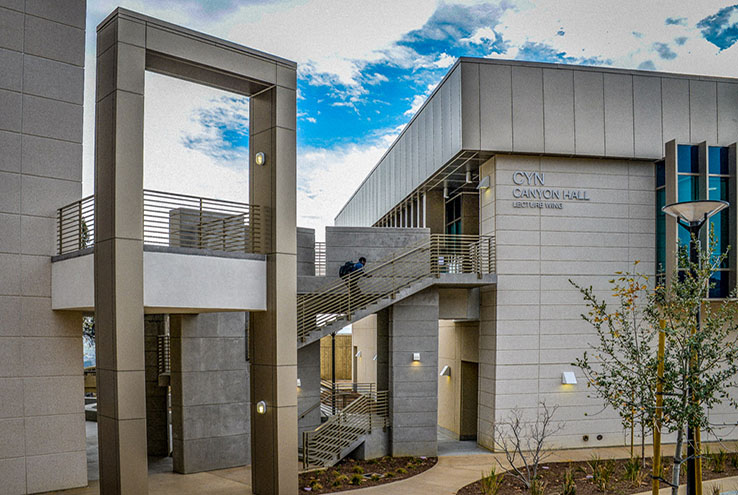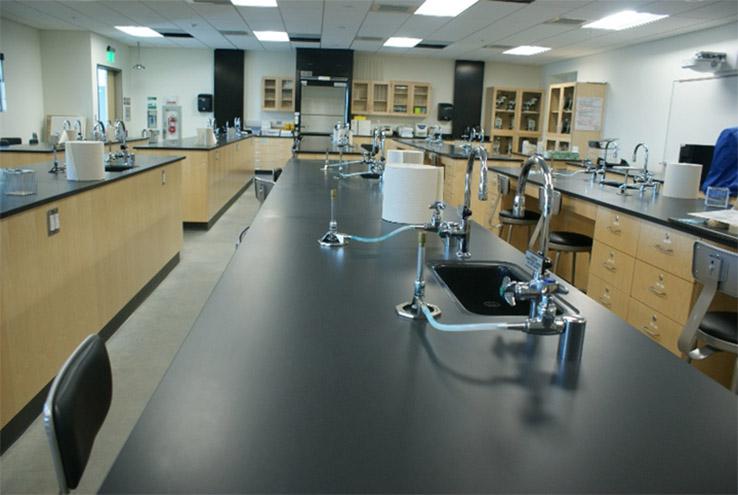Canyon Hall Wins Award for Outstanding Design
Publish Date: Dec. 16, 2016

Exterior of Canyon Hall
Little Diversified Architectural Consultants announced that Crafton Hills College’s Canyon Hall has been selected for publication in Penton’s American School & University® 2016 Architectural Portfolio. The project is featured in the November 2016 edition of the magazine and also online at www.SchoolDesigns.com. An annual competition honoring education design excellence, the Architectural Portfolio spotlights projects representing today’s most effective learning environments.
Designed by Little, Canyon Hall perches dramatically at the top of a steep slope facing the southeast with magnificent landscaping. The 36,000-square foot facility, utilizing contextual design themes and materials, is separated into two buildings connected by a bridge at the second floor and contains separate lecture/faculty and laboratory/ classroom wings.

Concrete stairs are the primary vertical circulation for each of the buildings with two (2) machine room-less elevators shared between them. Exterior finishes include pre-cast concrete and composite aluminum cladding systems as well as traditional aluminum storefronts and cement plaster.
The storm water system collects storm water around the building and redirects it into the existing drainage system down the canyon and into the City of Yucaipa.
Canyon Hall houses chemistry, organic chemistry, anatomy, biology, and microbiology/molecular biology. It opened in fall 2015 and was funded with Measure P bond monies.
A jury of American Institute of Architects (AIA) Committee on Architecture for Education members and education administrators evaluated submissions from architectural firms, schools and universities across the country. One hundred seven projects were chosen for publication in AS&U, an educational facilities, purchasing and business administration magazine reaching 57,000 facility planners, school and university administrators, and architects with this issue. This is the competition’s 34th year.
When determining citation winners and other outstanding designs, this year’s jury decided upon the following criteria: integration of technology, engaging landscapes, regional vernacularism, project-based learning, user-specific designs, sensitivity to context, accessibility, quality, diversity, inclusivity, living/learning communities, experiential learning, cohesive design concept, and environments that are evocative and inspirational.



